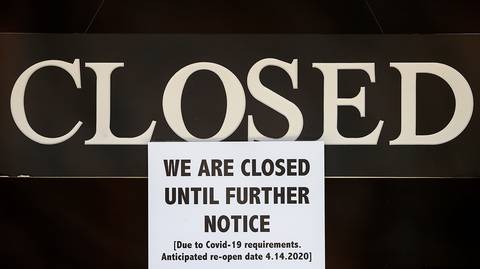
This post will attempt to answer the following questions:
- What should we do when the COVID-19 restrictions ease?
- How can we tell if the virus is coming back?
It’s a shame but it appears that decisions over how to handle this pandemic is no longer an issue of science and more an issue of political science. This is resulting in a patchwork and ad hoc response that respects state and political party lines. The problem is that the virus does not respect these artificial boundaries.
In reality, I have had a hard time stomaching the news on these topics. Mainly this is because I have been so busy taking care of COVID-19 patients that I don’t have the time or energy. It is also because I find there to be an overwhelming quantity of nonsensical and absurd content out there that it pains me to read. I also have a major case of COVID fatigue. I’m sure you do as well. It does appear that everyone with an MD or PhD after their name is recommending that we wait longer before opening things up. Those on the other side of this argument are all politicians. My bias is with the science but that is easy for me to say since my job livelihood is not threatened.
It is certain that we cannot stay sheltered in place until the virus is completely gone. We are going to have to accept a certain level of illness and even death to prevent complete breakdown of our social and economic way of life. The question is where the point of balance is between those competing forces. It’s a difficult question with huge repercussions. It has been estimated that if New York or China had acted more aggressively just 2 or 3 weeks earlier the disease could have been contained. In other words, if we open up 2 or 3 weeks early there could be disastrous consequences.
With that said, I am not making any decisions about when businesses can open up and it is likely that you do not wield that power either (If you do have such power, let me know because I would like to share my opinion). It seems that things are opening up soon and neither of us are able to stop that. I have now progressed through the 5 stages of COVID grief:
- Denial – Its only a problem in a far away place and it’s not as bad as the flu.
- Anger – I have to homeschool!?!
- Bargaining – Can we please send our kids back to school? I’ll even wear a mask in my sleep if you’ll just take back my kids…
- Depression – I’ve watched everything on Netflix and I can’t move my legs.
- Acceptance. Going for a walk outside is kind of nice and did you know they still print books on paper?
For me the acceptance stage has involved a recognition that the people who are going to listen to the doctors are already listening and the ones who are not going to listen are not – no matter how impressive and logical the arguments.
So things are going to open up and they are going to open up soon. The virus is still going strong and we are all back at risk. What should you and I do to keep ourselves safe even as the viral storm rages around us? The good news is that you are already doing many of these things already and hopefully have grown accustomed. The strictness with which you need to adhere to your own personal restrictions will depend on your local epidemiology and personal risk. Here are my recommendations:
- Keep an eye on the numbers of new cases in your area. If there have been consistently declining numbers of new cases in your area for 2 weeks or more you can feel more at ease. Even after you see the decline continue to watch for the numbers to rise again.
- Wear your masks, wash your hands, and keep your distance just like we’ve all been doing.
- Continue to take precautions with shopping and groceries.
- I would recommend against eating out or going to public places with lots of people until there has been a decline in new cases for 2 weeks or your local public health authority (not your politician) eases the restrictions.
- Take care of yourself and someone else too.
- Pray for a vaccine (may it come speedily and in our days).
Every generation faces a challenge or upheaval that forces sacrifice and struggle, perhaps this is ours. I look forward to a time when we can look back longingly at all the quality time we spent with family – to a time when we can ridicule the anti-vaxxers for refusing their coronavirus vaccines. It can’t come fast enough.
Can you explain each step in getting infected up to the portal of entry that is prevented by hand washing?
Thanks
Art
LikeLike
I talked about that early on: Check i tout here https://mycovidjourney.com/2020/03/23/how-covid-makes-you-sick/
LikeLike
I appreciated your descriptions of the stages of grief, especially as a teacher, I sometimes feel like i sit between 4 and 5. I really miss my kids, but I felt that we were waiting to long to say that we weren’t going back to school. I don’t want to go back to the building because my fear would be to be asymptomatic and give the virus to one of the 100+ students that I interact with in a day.
LikeLike